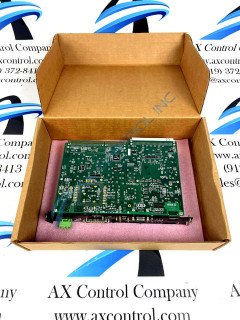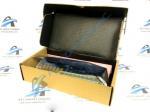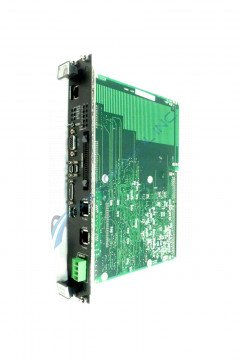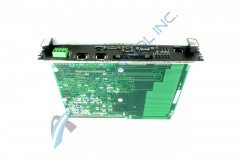About the IS215UCVDH7A
The IS215UCVDH7A model is part of the Mark VI Turbine Control System produced by General Electric. The Mark VI Turbine Control System Series, as you have probably been able to guess based off its full extended series title here, exists with a specific set of possible functional applications in the control and management systems of GE-compatible gas, steam, and wind turbine automated drive assemblies. This must be defined as a significant step up in terms of functionality from the previous industry-standard Mark V Turbine Control System Series of basically the exact same full extended Mark Series title, as the Mark V Series's established gas and steam possible environment range was expanded to accept the more alternative energy-focused wind turbine functional setting with the rollout of the Mark VI Series. This IS215UCVDH7A Status and Communication Card product's mark VI Series is additionally lauded given its status as one of GE's final-developed Mark Series utilizing the patented Speedtronic control system technology.
Hardware Tips and Specifications
This is a VME Controller which operates on a pre-emptive multi-tasking operating system built on a QNX platform. The operating system allows for the scheduled execution of a high-priority task control that interrupts the execution of medium/low-priority control tasks. The IS215UCVDH7A model is a double-board computer designed to be mounted in a VME rack. As the IS215UCVDH7A board is a VE Controller it will share a common processor platform that has different drive LAN connector options that address particular applications within the VME rack. This model is used in industrial applications where high speed and reliability are required. The IS215UCVDH7A board has one DLAN+ interface, as well as two Genius interfaces, and two ISBus interfaces. All of these interfaces are located on the front faceplate of the IS215UCVDH7A board. The DLAN+ interfaces have several communications services which include direct access to all 255 Status_S pages and directed and group command messages can be sent to any device Status_S pages as long as instruction from user logic has been established.
In terms of LED indicators, there are ten which range from STATUS LEDs, as well as a Slot 1 LED, active LED, ENET LED, and several others. The active LED will indicate that the microprocessor is active. If you have any inquiries regarding the operation of the LEDs on the IS215UCVDH7A refer to the GEP-9145 manual which indicates what each LED on the faceplate does. This IS215UCVDH7A Status and Communication Card device's personalized product page up to this point has consisted of information retrievable from a diligent technician-led visual inspection of the IS215UCVDH7A Status and Communication Card PCB itself, which was deemed as necessary given this IS215UCVDH7A Status and Communication Card product's low amount of online-available instructional manual materials. With this being the case, the IS215UCVDH7A Status and Communication Card functional product number itself can also be introduced as a fine source of IS215UCVDH7A Status and Communication Card hardware information, as it codes for various relevant details through a series of consecutive functional naming elements. For example, this IS215UCVDH7A product number specifically begins with an iteration of the dual-functional IS215 series tag indirectly identifying this IS215UCVDH7A Status and Communication Card product's special modular Mark VI Series assembly as well as its domestic original GE manufacture location. Some of the other relevant details in this medium include the IS215UCVDH7A Status and Communication Card device's:
- UCVD functional product acronym
- Group Seven Mark VI Series grouping
- Conformal PCB coating style
- A-rated primary functional revision

















